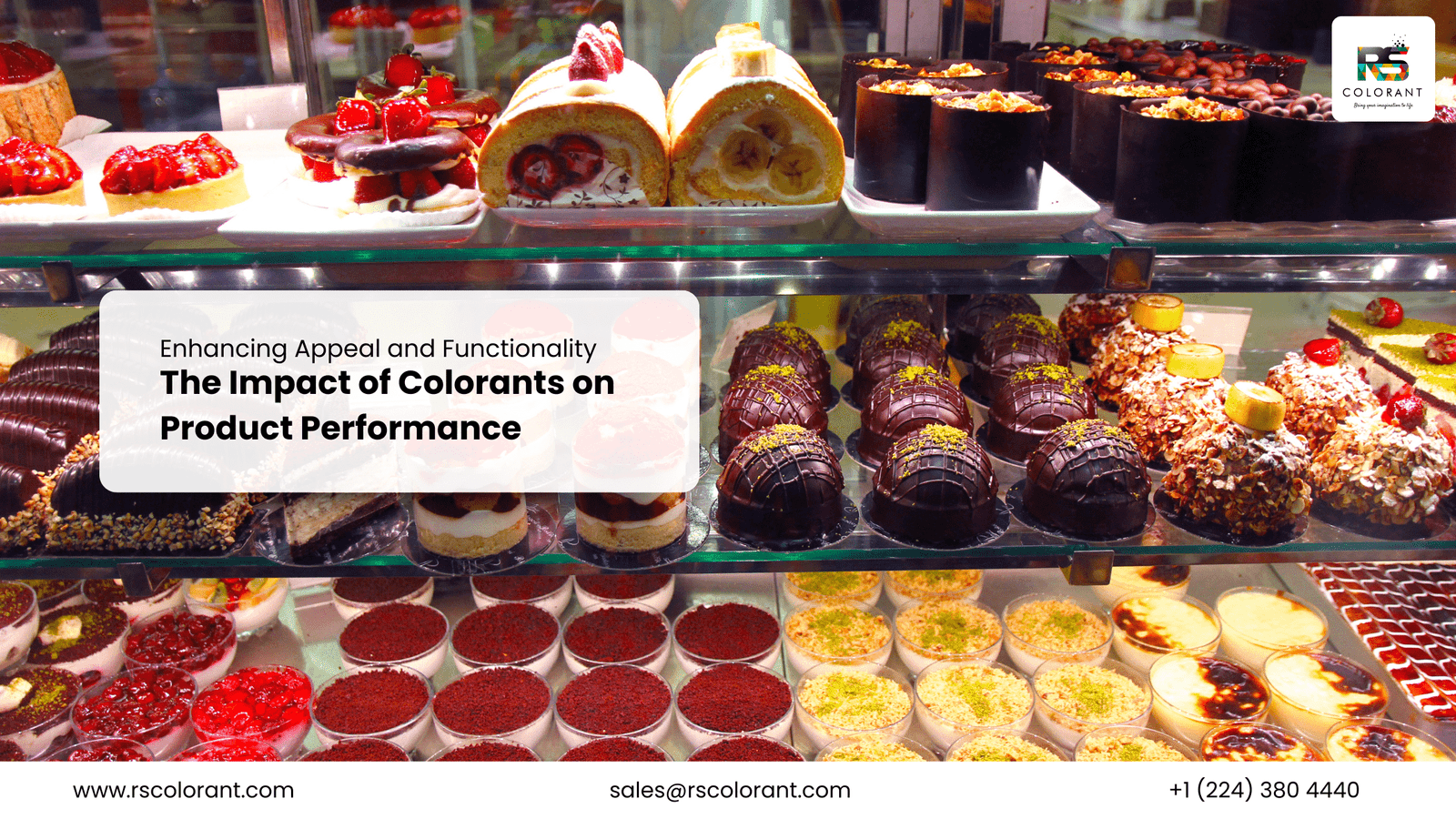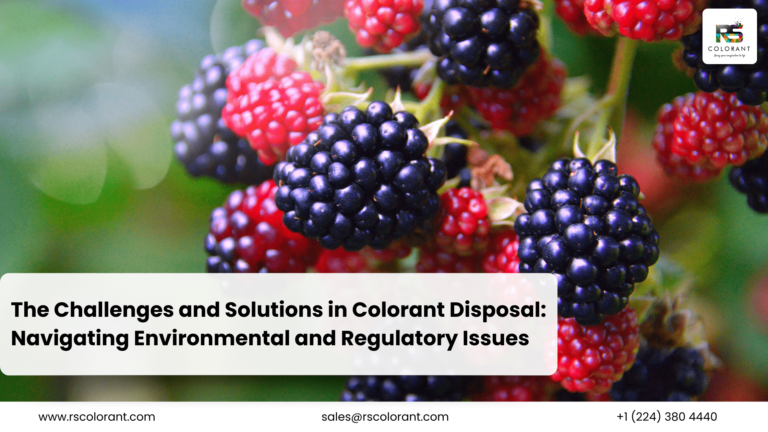The Effect of Colorants on the Performance of Products
- Introduction
- Overview of colorants
- Importance of color in products
- Understanding Colorants
- Definition and types of colorants
- Natural vs. synthetic colorants
- The Role of Colorants in Product Appeal
- Visual appeal and consumer psychology
- Case studies: Successful use of colorants in products
- Colorants in Food and Beverages
- Impact on taste perception
- Health concerns and regulations
- Colorants in Cosmetics and Personal Care Products
- Influence on consumer preference
- Safety and regulatory standards
- Colorants in Pharmaceuticals
- Role in medication adherence
- Regulatory guidelines and safety
- Industrial Applications of Colorants
- Use in plastics and textiles
- Performance enhancement
- Environmental and Health Impacts of Colorants
- Potential health risks
- Environmental consequences
- Innovations in Colorant Technology
- Advances in natural colorants
- Sustainable and eco-friendly alternatives
- Consumer Preferences and Market Trends
- Shifts towards natural and organic products
- Market demand and consumer behavior
- Challenges in Colorant Application
- Stability and compatibility issues
- Technical challenges in formulation
- Case Studies of Colorant Failures
- Examples of product failures due to colorant issues
- Lessons learned
- Future of Colorants in Product Development
- Emerging trends and technologies
- Predictions for the next decade
- Conclusion
- Summary of key points
- Final thoughts on the impact of colorants
- FAQs
- Common questions about colorants and their use
The Effect of Colorants on the Performance of Products
Introduction
Colorants are more than just pretty pigments—they’re vital components that can make or break a product’s success. From the food we eat to the cosmetics we use, colorants play a crucial role in influencing our choices and perceptions. But how exactly do they impact product performance? Let’s dive in and explore the fascinating world of colorants.
Understanding Colorants
Definition and Types of Colorants
Colorants are substances used to impart color to other materials. They can be classified into two main types: dyes and pigments. Dyes are soluble in their medium, while pigments are not. Both types are used in a variety of products, including food, cosmetics, pharmaceuticals, and industrial materials.
Natural vs. Synthetic Colorants
Natural colorants are derived from plants, animals, and minerals, while synthetic colorants are created through chemical processes. Each type has its pros and cons. Natural colorants are often seen as safer and more environmentally friendly, but they can be less stable and harder to standardize. Synthetic colorants, on the other hand, offer more vibrant and consistent colors but come with potential health and environmental concerns.
The Role of Colorants in Product Appeal
Visual Appeal and Consumer Psychology
Color is one of the first things consumers notice about a product. It can evoke emotions, create brand recognition, and even influence purchasing decisions. For instance, the bright red of a candy can make it look more appetizing, while the subtle hues of skincare products can convey a sense of luxury and effectiveness.
Case Studies: Successful Use of Colorants in Products
Consider Coca-Cola’s iconic red or Tiffany & Co.’s signature blue. These colors are instantly recognizable and heavily associated with their brands. The strategic use of colorants has played a significant role in building these strong brand identities.
Colorants in Food and Beverages
Impact on Taste Perception
Believe it or not, color can influence how we perceive the taste of food and beverages. A brightly colored drink might seem sweeter than a pale one, even if the flavor is the same. This psychological effect can enhance the overall sensory experience of the product.
Health Concerns and Regulations
The use of synthetic colorants in food has raised health concerns over the years. Some studies have linked artificial dyes to hyperactivity in children and other health issues. As a result, many countries have strict regulations governing their use. For example, the European Union requires warning labels on foods containing certain synthetic dyes.
Colorants in Cosmetics and Personal Care Products
Influence on Consumer Preference
In the beauty industry, color is king. The shade of a lipstick or the tint of a foundation can make all the difference in a consumer’s purchase decision. Colorants help create a wide array of shades and finishes that cater to diverse skin tones and preferences.
Safety and Regulatory Standards
Safety is a paramount concern in cosmetics. Regulatory bodies like the FDA and the European Commission have stringent guidelines to ensure that colorants used in cosmetics are safe for use on the skin. Despite these regulations, the debate over the safety of synthetic colorants continues, prompting a shift towards natural alternatives.
Colorants in Pharmaceuticals
Role in Medication Adherence
Colorants in pharmaceuticals aren’t just for looks—they play a functional role too. Different colors can help patients distinguish between medications, reducing the risk of errors. They can also improve adherence by making pills more attractive and easier to identify.
Regulatory Guidelines and Safety
Pharmaceutical colorants are subject to rigorous testing and approval processes. Agencies like the FDA ensure that these colorants do not interfere with the drug’s efficacy or pose any health risks to patients.
Industrial Applications of Colorants
Use in Plastics and Textiles
Colorants are widely used in the manufacturing of plastics and textiles. They not only add aesthetic value but also enhance the material’s performance. For instance, UV-resistant colorants can extend the life of outdoor furniture, while colorants in textiles can improve fabric durability.
Performance Enhancement
In industrial applications, colorants can improve product performance by providing additional properties such as heat resistance, lightfastness, and chemical stability. This makes them crucial in sectors like automotive, construction, and electronics.
Environmental and Health Impacts of Colorants
Potential Health Risks
Some synthetic colorants have been linked to adverse health effects, including allergies, skin irritation, and even carcinogenicity. This has led to increased scrutiny and demand for safer alternatives.
Environmental Consequences
The production and disposal of synthetic colorants can have significant environmental impacts. They can contribute to water pollution and harm aquatic life. As a result, there is a growing emphasis on developing eco-friendly colorants and sustainable manufacturing processes.
Innovations in Colorant Technology
Advances in Natural Colorants
Recent innovations have led to more stable and vibrant natural colorants. Scientists are exploring sources like algae, beetroot, and turmeric to create colorants that are both safe and effective.
Sustainable and Eco-Friendly Alternatives
The push for sustainability has spurred the development of biodegradable and renewable colorants. These alternatives aim to reduce environmental impact without compromising on performance.
Consumer Preferences and Market Trends
Shifts Towards Natural and Organic Products
Consumers are increasingly favoring products with natural and organic ingredients, including colorants. This shift is driven by growing health consciousness and environmental awareness.
Market Demand and Consumer Behavior
The demand for natural colorants is reflected in market trends, with a noticeable rise in products labeled as “clean” or “green.” Brands that align with these preferences are likely to gain a competitive edge.
Challenges in Colorant Application
Stability and Compatibility Issues
One of the biggest challenges with colorants, especially natural ones, is their stability. They can degrade over time or react with other ingredients, affecting the product’s quality and appearance.
Technical Challenges in Formulation
Formulating products with colorants requires a delicate balance. Factors like pH, temperature, and light exposure can all impact the final result. Overcoming these technical hurdles is crucial for creating high-quality products.
Case Studies of Colorant Failures
Examples of Product Failures Due to Colorant Issues
Not all colorant applications are successful. For example, a well-known soda brand once faced backlash when it changed its formula and color, leading to a significant drop in sales. Another case involved a skincare product that turned an unappealing color over time, resulting in poor consumer reviews.
Lessons Learned
These failures highlight the importance of thorough testing and consumer research. Understanding how colorants interact with other ingredients and how they are perceived by consumers can prevent costly mistakes.
Future of Colorants in Product Development
Emerging Trends and Technologies
The future of colorants looks promising, with advancements in biotechnology and material science leading the way. Innovations like lab-grown pigments and smart colorants that change with environmental conditions are on the horizon.
Predictions for the Next Decade
Over the next decade, we can expect a continued shift towards sustainable and natural colorants. Regulatory pressures and consumer demand will drive this change, leading to safer and more eco-friendly products.
Conclusion
Colorants are integral to the performance and appeal of countless products. From enhancing visual appeal to improving functionality, they play a critical role in various industries. As technology advances and consumer preferences evolve, the future of colorants will undoubtedly bring exciting innovations and opportunities.
FAQs
1. Are natural colorants safer than synthetic ones?
Natural colorants are generally considered safer due to their lack of harmful chemicals. However, they can still cause allergies in some individuals, so it’s essential to check product labels.
2. How do colorants affect the taste of food?
Colorants can influence taste perception by enhancing the visual appeal of food, which in turn can affect how we perceive its flavor. Bright, vibrant colors often make food seem more appetizing.
3. What are the environmental impacts of synthetic colorants?
Synthetic colorants can contribute to water pollution and have harmful effects on aquatic life. Their production processes may also generate toxic byproducts.
4. Can colorants in cosmetics cause skin irritation?
Yes, some synthetic colorants can cause skin irritation, especially in individuals with sensitive skin. It’s always a good idea to do a patch test before using a new cosmetic product.
5. What are some examples of innovative colorants?
Recent innovations include colorants derived from algae, beetroot, and turmeric. There are also lab-grown pigments and smart colorants that change with environmental conditions.




